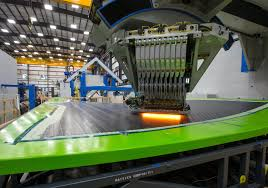
Breaking News
 $26M Frozen on Blockchain - With One Click
$26M Frozen on Blockchain - With One Click
 Italy are on national strike shutdown rejecting digital enslavement...
Italy are on national strike shutdown rejecting digital enslavement...
 The following U.S. states are currently using the rebranded "Reporty Homeland Security" so
The following U.S. states are currently using the rebranded "Reporty Homeland Security" so
 NATO Chief Urges Europe To Prepare For Long-Term World War With Russia, China, Iran & North Korea
NATO Chief Urges Europe To Prepare For Long-Term World War With Russia, China, Iran & North Korea
Top Tech News
 HUGE 32kWh LiFePO4 DIY Battery w/ 628Ah Cells! 90 Minute Build
HUGE 32kWh LiFePO4 DIY Battery w/ 628Ah Cells! 90 Minute Build
 What Has Bitcoin Become 17 Years After Satoshi Nakamoto Published The Whitepaper?
What Has Bitcoin Become 17 Years After Satoshi Nakamoto Published The Whitepaper?
 Japan just injected artificial blood into a human. No blood type needed. No refrigeration.
Japan just injected artificial blood into a human. No blood type needed. No refrigeration.
 The 6 Best LLM Tools To Run Models Locally
The 6 Best LLM Tools To Run Models Locally
 Testing My First Sodium-Ion Solar Battery
Testing My First Sodium-Ion Solar Battery
 A man once paralyzed from the waist down now stands on his own, not with machines or wires,...
A man once paralyzed from the waist down now stands on his own, not with machines or wires,...
 Review: Thumb-sized thermal camera turns your phone into a smart tool
Review: Thumb-sized thermal camera turns your phone into a smart tool
 Army To Bring Nuclear Microreactors To Its Bases By 2028
Army To Bring Nuclear Microreactors To Its Bases By 2028
 Nissan Says It's On Track For Solid-State Batteries That Double EV Range By 2028
Nissan Says It's On Track For Solid-State Batteries That Double EV Range By 2028
Meet the Giant Robot That Builds Boeing's Wings

In 2015, the Seattle centenarian pushed an average of 42 per month out of the door and into the sky. By 2018, it aims to make that 52 a month.
Faster assembly requires some fancy new tools, so Boeing brought in the robotic Panel Assembly Line, aka PAL. This 20 foot tall giant glides back and forth on tracks in the floor, patiently and accurately riveting wings together. The 60-ton machine increases production rates by 33 percent, helping workers with all that clamping and drilling.
PAL, built by Washington-based Electroimpact, joins upper and lower skin panels to spars which, like ribs, form the wing's internal support. The lower skin, which will become the bottom of the wing, has a series of "portholes" that airline mechanics use for inspections. Precision matters: These wings aren't just keeping you aloft, they're holding the fuel that's pushing your plane forward.

 Carbon based computers that run on iron
Carbon based computers that run on iron

